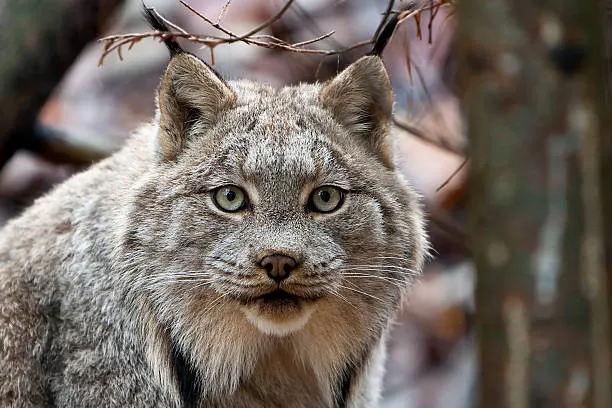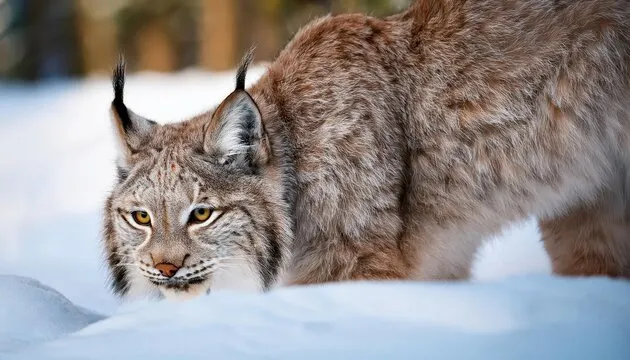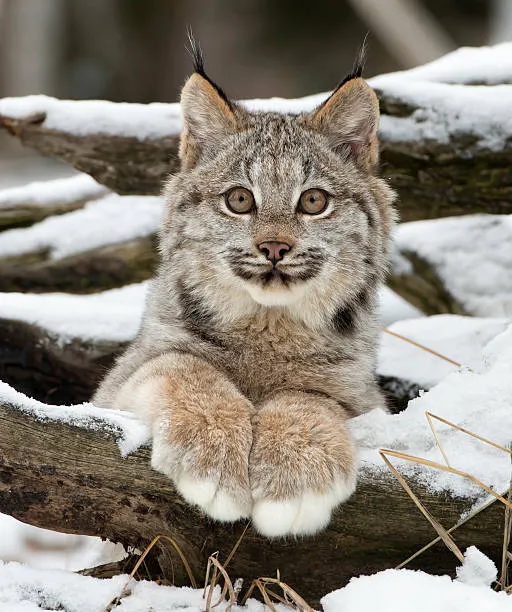Fascinating Facts About the Canadian Lynx

The Canadian lynx (Lynx canadensis) is a wild cat native to North America, primarily found in the dense boreal forests of Canada and parts of the northern United States. Known for its elusive nature and snowy habitat, the Canadian lynx is a fascinating predator perfectly adapted to cold environments. Below are some of the most captivating facts about this mysterious feline that highlight its unique characteristics and role in the ecosystem.
1. Masters of the Snow
Canadian lynxes have large, snowshoe-like paws covered in thick fur. These paws act like natural snowshoes, helping them walk atop deep snow with ease—giving them a major advantage over their prey and predators alike in harsh winter environments.
2. Specialized Snowshoe Hare Hunters
Their primary prey is the snowshoe hare, and their population cycles are tightly connected. When hare numbers drop, lynx numbers tend to decline shortly afterward. This predator-prey relationship follows a 10-year cycle, making the lynx an excellent example of ecological balance in action.
3. Built for Stealth
Canadian lynxes are solitary and nocturnal, using stealth and patience to stalk their prey. Their eyesight and hearing are extremely sharp, and they can detect the slightest movement even in thick vegetation or snow-covered terrain.
4. Distinctive Appearance
They have a short tail with a black tip, tufted ears, and ruffed fur on their cheeks—giving them a regal, almost mythical look. Their thick silvery-brown coat helps camouflage them in snowy and wooded areas and provides insulation in freezing temperatures.

5. Not to Be Confused with the Bobcat
Although often mistaken for the bobcat, the Canadian lynx has longer legs, larger feet, and more prominent ear tufts. Their ranges sometimes overlap, but lynxes are more specialized for cold, snowy regions, while bobcats prefer a wider variety of habitats.
6. Low Reproductive Rate
Lynxes typically breed once a year. Females usually give birth to 1–4 kittens in spring, after a gestation period of about 60–70 days. Their reproduction rate is influenced by food availability—if snowshoe hares are scarce, they may not reproduce at all that year.
7. Climbers and Swimmers
Though they are primarily ground-dwelling, lynxes are agile climbers and strong swimmers, skills that help them avoid danger or reach prey in varied terrain. However, they rarely chase prey over long distances, preferring ambush tactics.
8. Territory and Solitude
Lynxes are highly territorial and require large ranges—sometimes over 100 square kilometers—especially in areas where prey is less abundant. They mark territory with scent markings and rarely encounter other lynxes outside of mating season.
9. Conservation Status
While not considered globally endangered, the Canadian lynx is listed as threatened in the contiguous U.S. (particularly in states like Colorado and Minnesota), mainly due to habitat fragmentation, vehicle collisions, and climate change, which affects snow cover and hare populations.
10. Protected and Studied
Thanks to its importance in understanding predator-prey dynamics, the Canadian lynx is the subject of numerous wildlife studies and conservation efforts. Protective legislation in some U.S. states and national parks has helped stabilize populations.

Conclusion: The Ghost of the Boreal Forest
The Canadian lynx is more than just a beautiful predator—it’s a critical component of northern forest ecosystems. With its adaptations for winter survival, its reliance on a single prey species, and its role as a barometer of environmental health, this elusive feline deserves both admiration and protection. Learning more about the lynx helps foster respect for the wild spaces it calls home.



